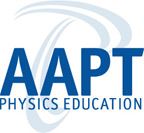- Home
- What We Do
- Laboratory Immersions
- Immersions 2020
- Imm2020Bethel_DigitalHolography
Optical imaging has undergone a "digital" revolution in the past years due to the wide availability of powerful computing hardware, optical devices such as spatial light modulators, and low-cost, high quality detectors including CCD and CMOS cameras. In particular, the emergence of digital techniques that explicitly model the propagation of light has revolutionized optical imaging through digital holography and digital holographic microscopy. These techniques offer many advantages over conventional imaging optics such as: capturing the full complex wave in amplitude and phase; adjusting the focus of an image after the image is captured; eliminating aberrations or imaging through scattering media; or allowing the freedom to choose any imaging modality, e.g. phase vs. amplitude contrast, on-the-fly. Intriguingly, digital holography and related techniques allow the capture of an image without the use of any lenses. Indeed, high-resolution, diffraction-limited performance is easily achieved. All of this is possible through the central idea of holography: directly capturing the interference pattern between a known and stable “reference wave” and an unknown and perhaps dynamic “object wave” that reflects from or transmits through a sample of interest, shown in figure 1a. These interference patterns were historically captured on analog film. Modern digital versions capture the hologram pattern directly on a high-density CCD or CMOS imager chip, shown in Figure 1b. While laser sources are typically used, in some cases it is also possible to use LEDs.
In this immersion participants will: (1) learn the physics of light propagation and Fourier optics; (2) understand experimental techniques for lens-less digital imaging and microscopy; (3) write and use computer algorithms suitable for wave propagation; (4) design, construct, and experiment with a simple yet powerful digital holography apparatus. Since digital holography directly captures an interference pattern, it is sensitive to extremely small changes in the object such as its geometry (e.g., through thermal expansion or deformation) or its refractive index. Multiple experiments and physical measurements are possible (ranging from imaging microparticles to small deformations due to thermal expansion) depending on participant interest.
Participants should bring a lab notebook. Experience with a scientific computing language such as MATLAB or Python is helpful but not absolutely required. Safety concerns include the use of lasers. Components for the homemade digital holography apparatus typically cost ~$1000 and include: (1) Opto-mechanics for aligning the setup; (2) A laser or LED source; (3) a CCD or CMOS imager; (4) Various optical elements including mirrors, lenses, or beam-splitters.
Figure 1. (a) Holography concept. (b) Sample digital holography apparatus.
Mentors: Nathan Lindquist
Nathan’s research covers interdisciplinary applied optics and nanotechnology. This includes nano-optical devices for sensing, super-resolution imaging, plasmonics, surface-enhanced spectroscopy, and nano-fabrication techniques. Under an NSF CAREER grant, Nathan and his undergraduate research students have developed new methods that apply digital holographic imaging and computer-generated holography to nano-photonic devices for high-resolution imaging, single-molecule spectroscopy, and optical nano-manipulation.





